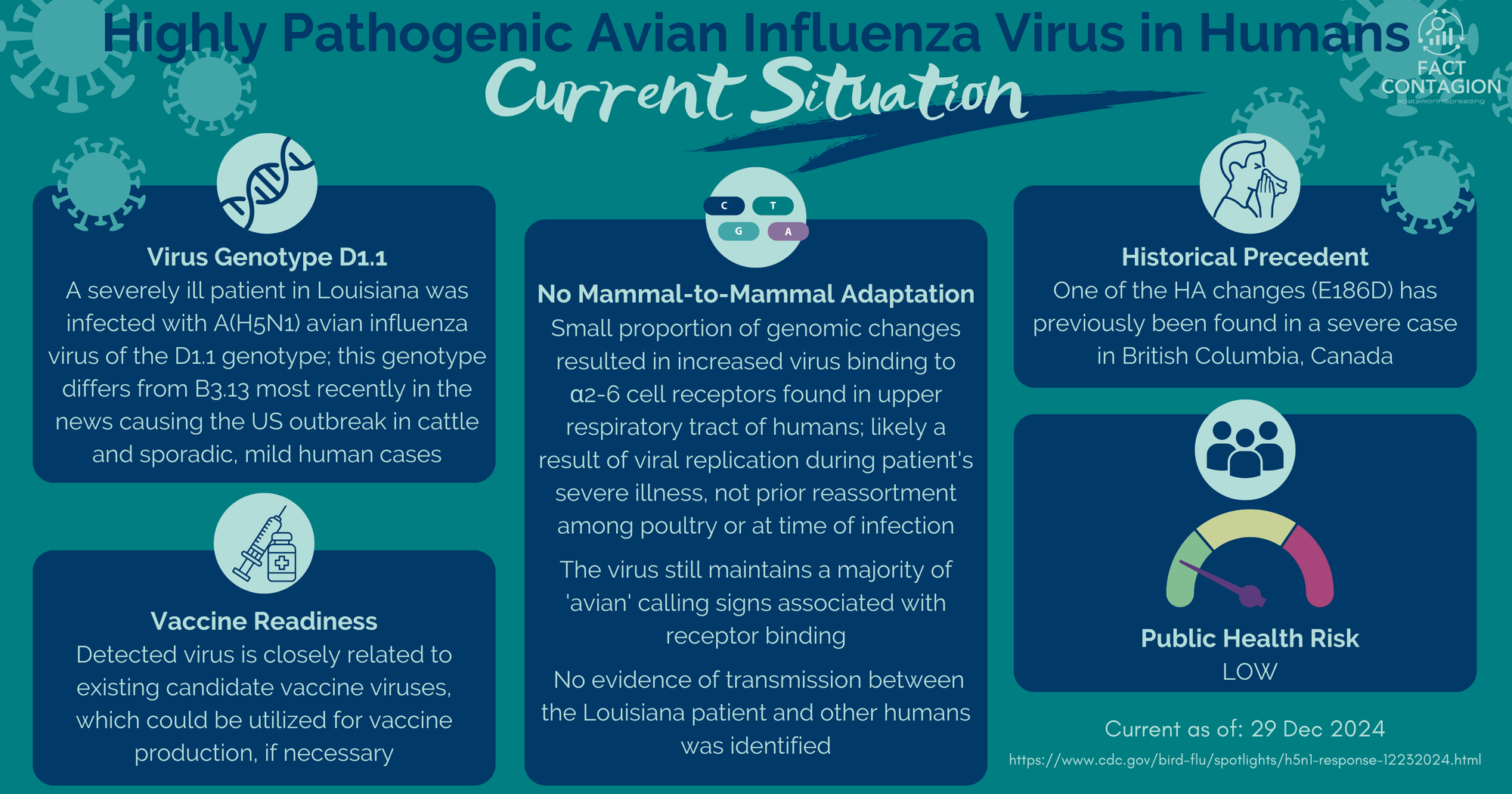Avian H5N1 Flu in Humans: Current Situation

I spent 10+ years working in zoonotic influenza pandemic preparedness. So while I 100% appreciate the warning signs, I can’t help but to caution against the sensationalized journalism of late. Yes, H5N1 avian flu's jump into cattle is an alarming development that demands a well-coordinated response to minimize the risk of further reassortment and spread. But - its spillover into mammals, including big cats, is not unprecedented. Overly dramatic claims of "unheard of virus behavior" or "omnious signs" can be exaggerated narratives.
Bird flu has killed 20 big cats including cougars at a U.S. wildlife sanctuary
Recently, a person in Louisiana developed an unusually severe case of H5N1 avian influenza virus. When infected with H1N1 bird flu, humans typically experience mild to moderate flu-like symptoms, including conjunctivitis (pink eye). This case was notable in its severity and sparked a wave of press articles.
CDC: H5N1 mutations in severely ill patient could boost spread, but risk remains low
So let's review the facts:
Virus Genotype
The severely ill patient in Louisiana was infected with A(H5N1) avian influenza virus of the D1.1 genotype. This genotype differs from the B3.13 genotype most recently in the news causing the US outbreak in cattle and sporadic, mild human cases.
No Key Mammal-to-Mammal Adaptations
A small proportion of genomic changes resulting in increased virus binding to α2-6 cell receptors found in the upper respiratory tract of humans was detected; however, the virus still maintains a majority of 'avian' cell receptor calling signs. Low-frequency (meaning low rate/uncommon) changes in the hemagglutinin (HA) gene (A134V, N182K, E186D) associated with adaptation to mammals detected in the virus cultured from this human case are likely the result of viral replication during patient's severe illness, not prior reassortment among poultry or at the time of infection. No evidence of transmission between the Louisiana patient and other humans was identified.
Comparison with Other Human Cases
One of the HA changes (E186D) has also been found in a severe case in British Columbia, Canada.
Vaccine Readiness
The detected virus is closely related to existing candidate vaccine viruses, which could be utilized for vaccine production, if necessary.
Public Health Risk
The risk to the general public remains low.
Ongoing Monitoring
The identification of a severe human case with adaptive genetic changes highlights the critical need for continued genomic surveillance in humans and animals. Current outbreaks in poultry and cattle need to be effectively contained. And preventive measures, including seasonal flu vaccination, among people with exposure to infected animals or environments are essential.
https://www.cdc.gov/bird-flu/spotlights/h5n1-response-12232024.html
Stay informed, think critically, and don't get caught up in the noise.

